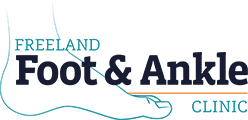Are thick, ugly, discolored fungal toenails a fact of life for you? Are they a constant source of embarrassment and shame? You’re in good company. An estimated 30+ million Americans are fellow sufferers. But the good news is new technologies—specifically laser treatment—have made treatment easier and better than ever.
Have you been dragging your feet about treatment? Did you try before without success, or found that after a few months or years the fungus simply returned? It’s time to book an appointment. We’ll explain why in two equally important parts below.
Part One: Where Traditional Treatments Fall Short
Look, we hear you. Anti-fungal medications (especially oral
Why is it so underwhelming?
It Takes Forever
Okay, not forever. But long enough to be a real inconvenience. To work properly, oral
Topical
Incidentally, you might ask yourself, “Why would anyone bother with topical medications under these circumstances?” Well, that’s because of our next point:
It Can Be Surprisingly Risky
While most people tolerate oral
Milder drawbacks might include nausea, headaches, and rashes. More serious side effects can include kidney or liver damage, and weakening of the heart’s ability to contract. (In the most severe circumstances, the medications
Oral
Cure Rates Are Just Not That Great
Oral anti-fungal medications have an annoying tendency to fail far more often than we’d hope. Even the most effective drugs on the market can only manage about a 70% overall cure rate by the end of the treatment course, with other anti-fungal pills battling closer to 60-40 or even 50-50. Topicals do even worse, failing more often than they succeed. And if you’re a senior, or have poor circulation related to a condition like diabetes, it only stacks the odds further against you.
Part Two: Why Laser Blows Old Treatment Out of the Water
If
It’s Convenient and Quick
No daily pills or weekly nail thinning—or any medications at all. No intrusive or time-consuming blood tests. Laser treatment requires only a few minutes per toe, per session. You can be in and out the door within the span of a lunch break or while you’re out doing chores.
Most people begin to see some clearing after the first treatment, and the average treatment course is only three sessions spaced out over a few weeks. (Some people may require one or two additional sessions to eliminate a particularly stubborn infection.) We’ll take that over daily pills any day!
Unfortunately, if your nail has become significantly damaged or misshapen, you’ll still have to wait for it to fully grow out—that’s true no matter what treatment method you pursue. But
It’s Safe
There are no known side effects to laser treatment. Yeah, you heard that correctly. None! The laser does not cut, burn, or sting. It won’t harm the sensitive skin underneath or surrounding your nail, and there are no adverse interactions that would complicate using it with other medications.
The beam of light emitted by the laser is precisely tuned so it passes through the nail without much trouble and poses no threat to your body’s cells—but it is deadly for the fungus. After the session, you go right back to your normal daily routine.
It Works
No treatment is 100% effective. But results from the laser treatment are extremely encouraging. Cure rates meet or exceed that of oral
Is There Any Reason I Wouldn’t Want to Choose Laser Treatment?
From a clinical perspective, we’re confident that laser treatment is the best and most effective option for fungal nails, with none of the drawbacks of
At Freeland Foot & Ankle Clinic, we’ll continue to provide oral and topical treatments in addition to the newer laser therapy as an alternative (or even both treatments in combination). We want to make sure you can receive treatment that is both effective and affordable, and that means providing options and weighing the pros and cons honestly and thoroughly.
Now is the time to finally get those fungal toenails under control. To schedule an appointment, give us a call at (989) 695-6788!

